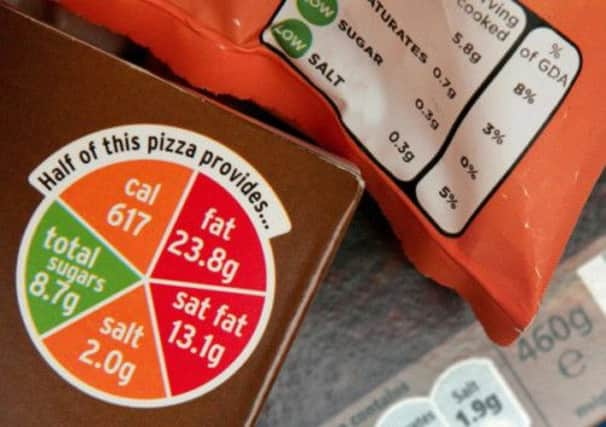Stephen Jardine: Giving food a label


When you give something a label, it’s best to be clear about exactly what it means. Unless of course you work in some sections of the food industry.
When was the last time you read a label? Don’t apologise, they are designed to be ignored.
Advertisement
Hide AdAdvertisement
Hide AdThere is less consumer information on something you buy to eat than on the label of the cooker you heat it in.
That is about to change. Earlier this summer, the government announced a new, consistent system of food labelling is to be introduced across the UK.
In the past a variety of different label regimes have been introduced, leading to customer confusion. But after a public consultation exercise and months of talks with the food industry, an across-the-board system has now been agreed to show how much fat, salt, sugar and calories a product contains.
The big breakthrough is an agreement on traffic-light colour coding. Health campaigners believe this will make it much easier for the public to engage with labelling and could see significant reductions in obesity.
The new system will be rolled out over the next 18 months … with one major drawback. At present, it’s voluntary. As a result only 60 per cent of foods will be covered with major producers such as Coca-Cola and Cadbury refusing to be involved, preferring to state daily eating guidelines on their packaging.
That’s disappointing. The best labelling system in the world will be really meaningful only if everyone signs up. The government should run a pilot project. And if the new labelling makes an impact, it must be made compulsory.
Here in Scotland, we face an added challenge. Scottish produce is some of the best in the world. Its quality reputation attracts a premium and we need to protect that at all costs.
Recently, Aldi hit the headlines for selling South American and EU products labelled Scottish. Aldi sliced turkey had a Saltire label with “produced in Scotland” on the front with the point of meat origin stated as Brazil in small print on the back.
Advertisement
Hide AdAdvertisement
Hide AdThat’s not illegal but in the light of the horsemeat scandal it does seem unnecessarily confusing.
Because something passes through a Scottish packaging plant at the end of a long food chain, it doesn’t mean it deserves a “made in Scotland” label.
The government should ensure the Saltire and the statement that something was made or produced in Scotland can be used only when the entire process took place here.
Supermarkets and food producers need to understand that clear and honest labelling is a fundamental step in rebuilding public confidence.